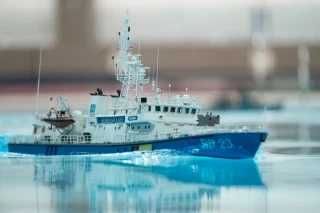TOMSK, 11 May – RIA Tomsk. The first part of Scientific park of Tomsk Polytechnic University (TPU) was officially opened on Wednesday; its first residents will be engaged, in particular, in development of new drugs, 3D-printer for work in space and with industrial robotics, the rector of the HEI Pyotr Chubik told journalists at the opening ceremony.
Earlier it was reported that construction of the first part of the engineering center for scientists of TPU will come to the end in 2016. In this building six laboratories for scientific groups of the higher education institution have to be located. Building of two more parts of Scientific park is planned. It is supposed that in total 18 scientific centers and laboratories will be located there.
"The main thing is that the equipment for the solution of one task (for each collective) in one place was finally managed to collect. In recent years we have acquired the equipment for the sum of 2 billion rubles <…>, and now received the building. We form a special environment, <…> that interdisciplinary ideas to be born here", – Chubik told.
He emphasized that the Russian and foreign students, graduate students and research associates will participate in researches in the scientific park. The building was constructed from scratch, the higher education institution spent about 96 million rubles for its construction.
The first groups – Laboratory of industrial robotics, the Center of space technologies, the Center of 3D-printing in space, the Center of collective use "Composition of substances and materials", the Center of resource efficient subsurface use, and also the RASA Center in Tomsk (specializes in creation of new drugs) have already begun to work in the Scientific park.
The center of the 3D-printing in space will be engaged in development of materials and devices which would allow to print the necessary tool or a detail on the printer, for example, at the International space station. The developments of the scientific group have been applied, in particular, during creation of the small satellite launched to anniversary of the higher education institution – it became the first-ever spacecraft which case is printed on the 3D-printer.









